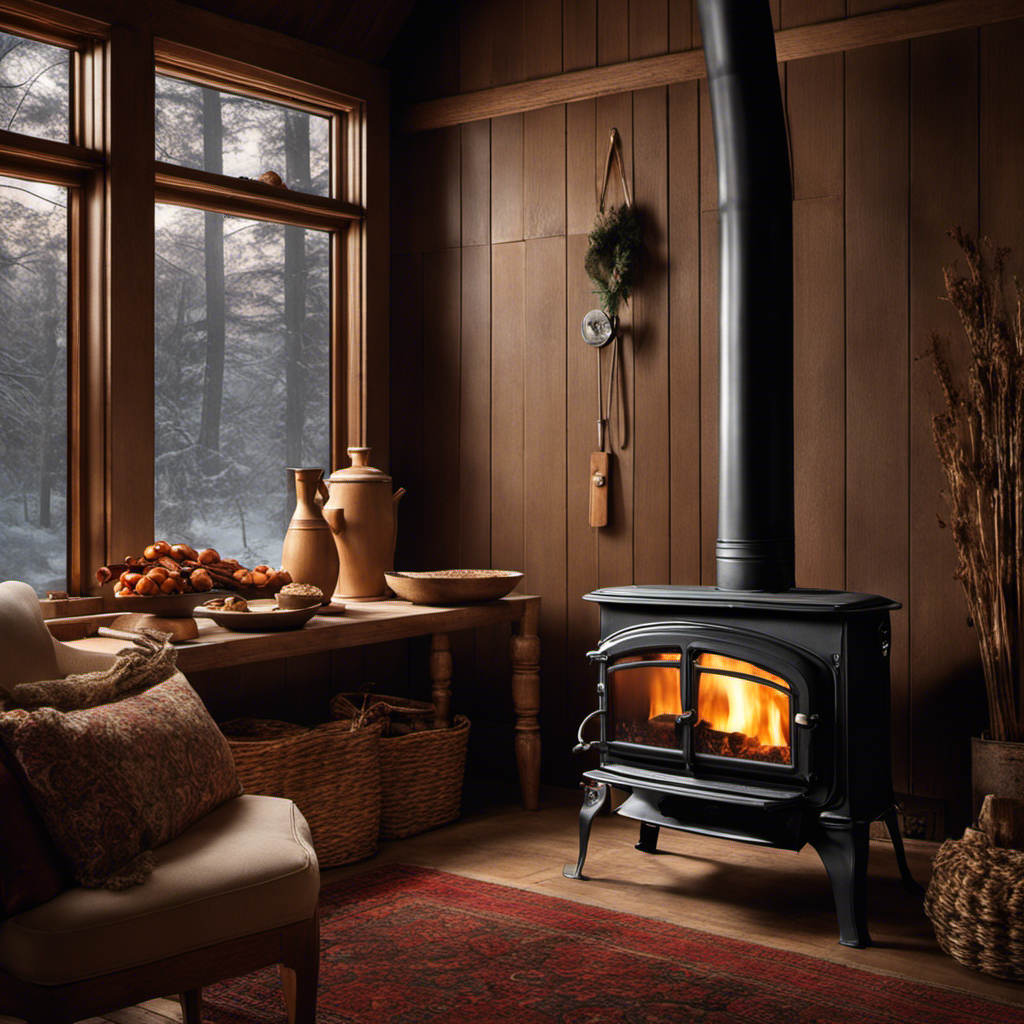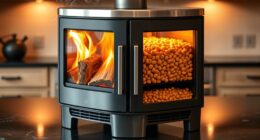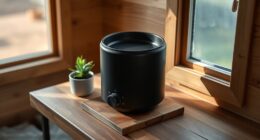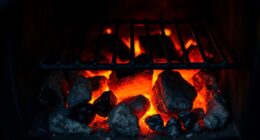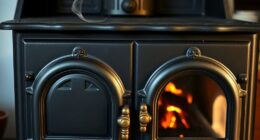I frequently find myself pondering, “What is the ideal operating temperature for my wood stove pipe?”
It’s crucial to keep tabs on the temperature for optimal performance and safety. In this article, we’ll delve into the importance of monitoring wood stove pipe temperature, understanding the ideal operating range, and factors that can affect it.
I’ll also provide valuable tips on achieving and maintaining the right temperature, as well as signs to watch out for if things get too hot or not hot enough.
Let’s get started!

Key Takeaways
- Maintaining the correct temperature within the wood stove pipe is crucial for proper insulation and stove efficiency.
- Monitoring the temperature allows for early identification of potential issues and ensures efficient and safe operation.
- The optimal operating temperature range maximizes heat output, minimizes creosote buildup, and reduces the risk of chimney fires.
- Factors such as airflow, wood quality, cleanliness of the pipe, and weather conditions can impact the wood stove pipe temperature.
The Importance of Monitoring Wood Stove Pipe Temperature
I need to monitor my wood stove pipe temperature to ensure safe and efficient operation. Proper insulation is crucial in maintaining the correct temperature within the pipe. Insufficient insulation can lead to heat loss, which not only reduces the efficiency of the stove but also poses a fire hazard. Regular maintenance is equally important. Over time, creosote can build up inside the pipe, restricting airflow and increasing the risk of a chimney fire.
By monitoring the temperature, I can identify any potential issues early on and take necessary action. Understanding the optimal operating temperature range is essential to ensure the stove is functioning efficiently and safely.
Transitioning into the next section, let’s explore what the optimal temperature range for a wood stove pipe should be.
Understanding the Optimal Operating Temperature Range
To ensure efficient performance, I want to know the ideal temperature range for my stove pipe. Maintaining a consistent wood stove pipe temperature has numerous benefits, including maximizing heat output and minimizing creosote buildup. Here are three key points to consider:
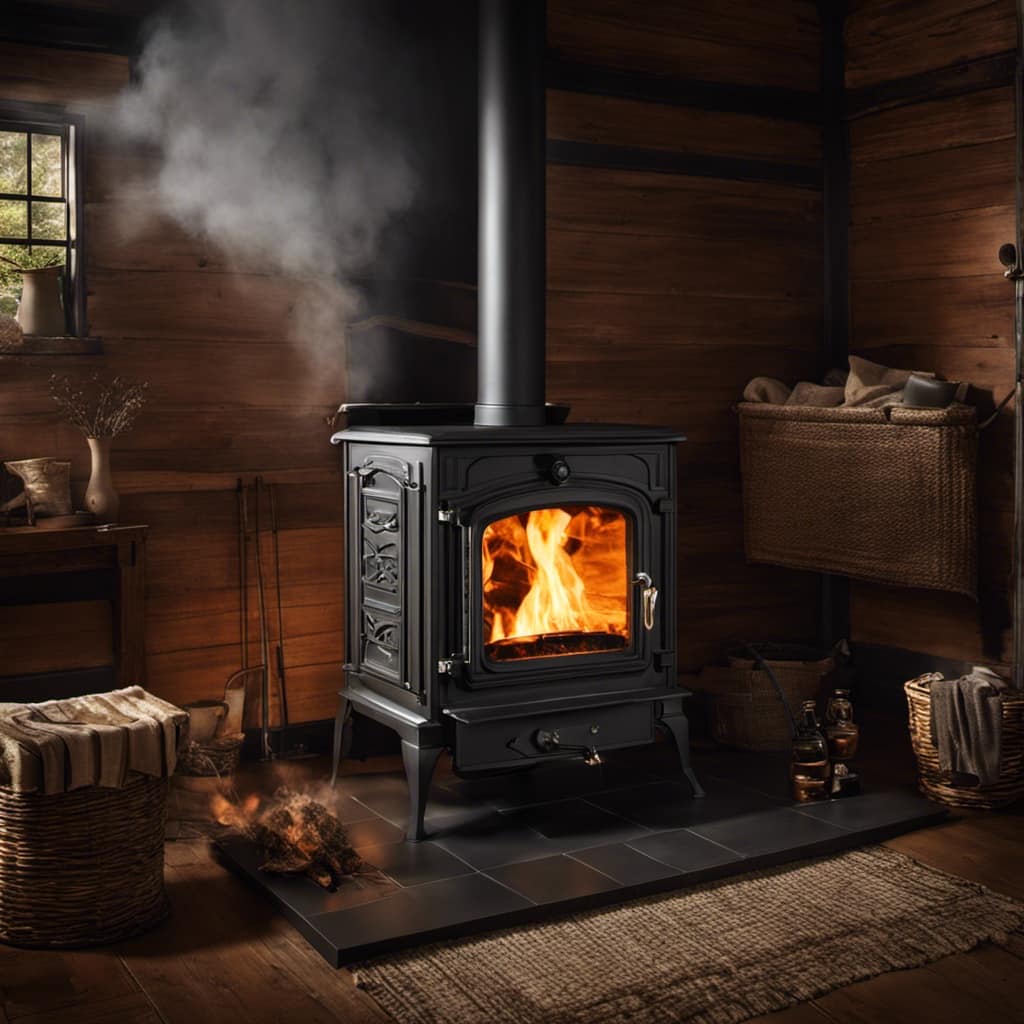
-
Efficiency: When the stove pipe is within the optimal temperature range, the wood burns more efficiently, resulting in a hotter fire and greater heat production for your space.
-
Safety: Consistent temperature helps prevent temperature fluctuations, which can lead to excessive creosote buildup in the chimney. This buildup can cause chimney fires, posing a serious risk to your home and family.
-
Troubleshooting: If you experience temperature fluctuations, it could indicate issues such as a blocked chimney, improper damper adjustment, or inadequate insulation. Troubleshooting these problems promptly ensures optimal stove pipe performance.
Understanding the ideal temperature range is essential, but it’s also important to be aware of the factors that can impact wood stove pipe temperature.
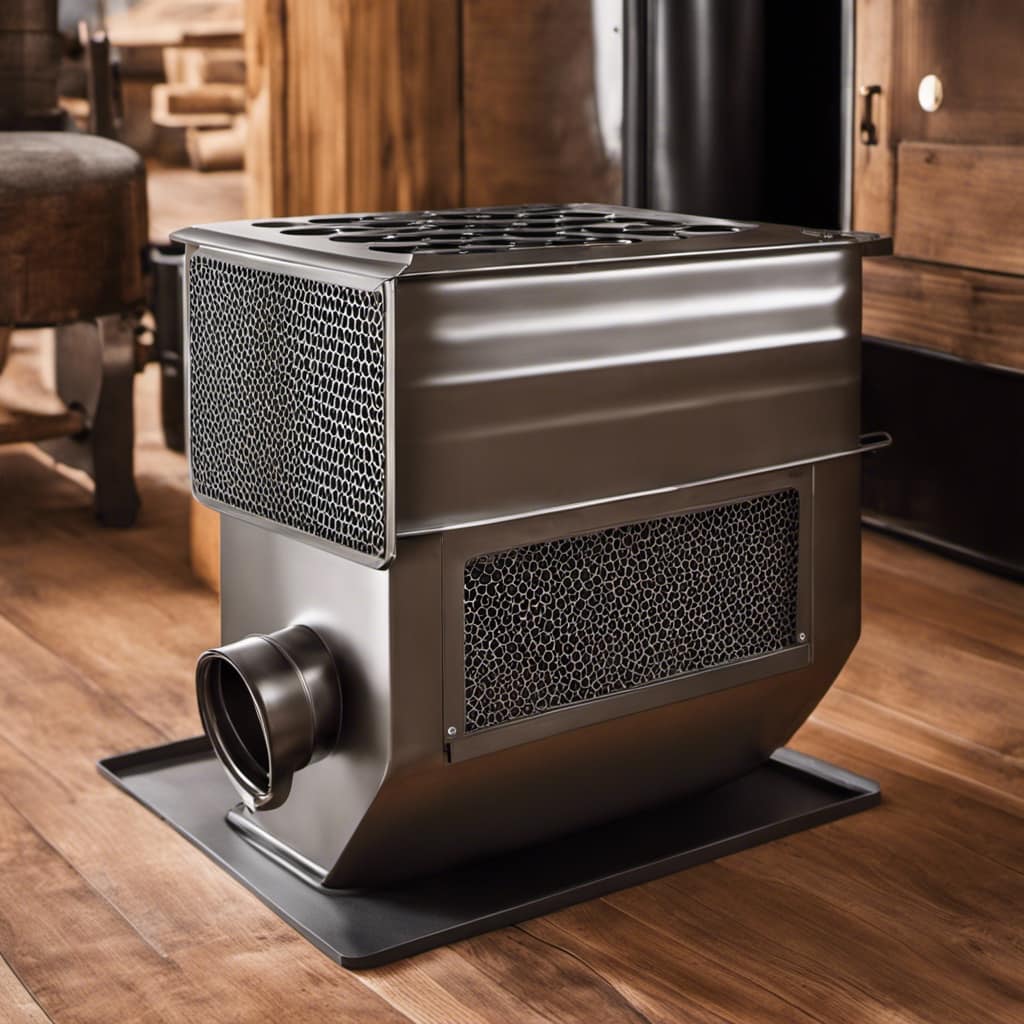
Factors That Can Impact Wood Stove Pipe Temperature
Maintaining a consistent temperature range in the stove pipe is crucial for optimal performance. Fluctuations in wood stove pipe temperature can be caused by various factors, and understanding these can help ensure efficient and safe operation. Common causes of temperature fluctuations include improper airflow, low-quality or wet wood, and a dirty or obstructed stove pipe. Weather conditions can also impact wood stove pipe temperature. Cold weather can cause the stove pipe to cool down more quickly, while windy conditions can disrupt the airflow and affect the burn rate. On the other hand, hot weather can lead to higher stove pipe temperatures, especially if the stove is located in a poorly ventilated area. By being aware of these factors, wood stove owners can take appropriate measures to maintain a consistent and optimal temperature range in their stove pipe.
| Factors That Can Impact Wood Stove Pipe Temperature |
|---|
| Improper airflow |
| Low-quality or wet wood |
| Dirty or obstructed stove pipe |
| Weather conditions |
Tips for Achieving and Maintaining the Right Temperature
As an owner of a wood stove, it’s important to understand the factors that can impact the temperature in order to achieve optimal performance. Here are some tips for achieving and maintaining the right temperature:
-
Use dry and seasoned firewood: Moisture content in firewood affects its ability to burn efficiently. Wet or green firewood can lead to lower temperatures and increased creosote buildup in the stovepipe.
-
Properly size the stove: Make sure your wood stove is appropriately sized for the space you’re heating. A stove that’s too small may struggle to reach and maintain the desired temperature, while a stove that’s too large may cause overheating and waste fuel.
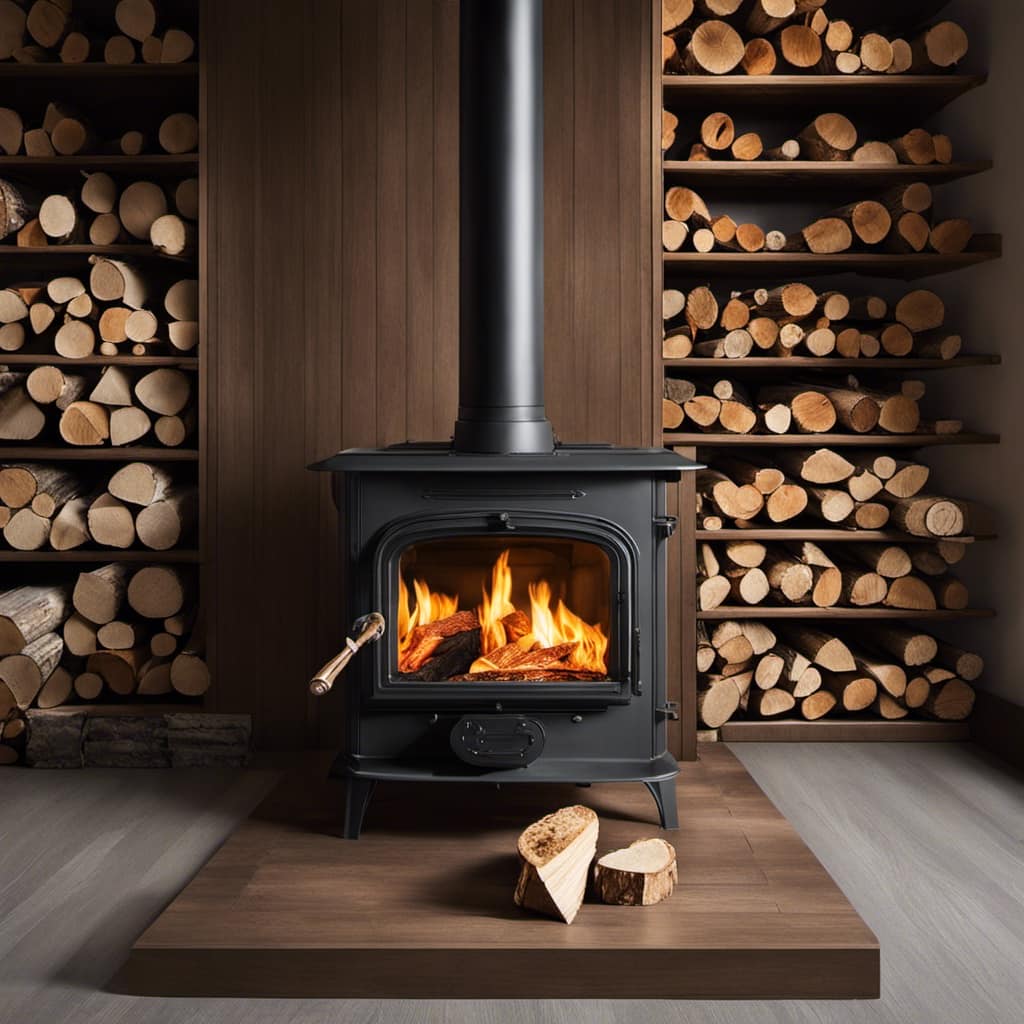
-
Regularly clean and maintain the stove: Clean the stove and chimney regularly to prevent creosote buildup, which can reduce efficiency and pose a fire hazard. Inspect and replace any damaged or worn-out components to ensure optimal performance.
Signs of Overheating or Insufficient Temperature in the Wood Stove Pipe
I can tell if my wood stove pipe is overheating or not reaching the right temperature by observing the color and condition of the surrounding materials. If the pipe is overheating, it may turn a reddish color or even start to warp. This is a clear sign that the temperature is too high and can lead to potential dangers such as a chimney fire or damage to the stove itself. On the other hand, if the pipe is not reaching the right temperature, it may appear sooty or have a buildup of creosote. This can result in poor combustion and reduced efficiency. To troubleshoot these issues, it is important to regularly clean and inspect the pipe, ensuring proper airflow and preventing any blockages. Additionally, using a stove thermometer can help monitor the temperature and make necessary adjustments to achieve optimal performance.
| Potential Dangers | Troubleshooting Tips |
|---|---|
| Chimney fire | Regularly clean and inspect the pipe to prevent blockages |
| Damage to stove | Ensure proper airflow for optimal performance |
| Poor combustion | Use a stove thermometer to monitor temperature and make adjustments |
Frequently Asked Questions
How Do I Measure the Temperature of My Wood Stove Pipe?
To measure the temperature of my wood stove pipe, I use a thermometer specifically designed for high heat. It’s important to monitor the temperature for proper temperature maintenance and to prevent any potential hazards.
Can the Temperature of the Wood Stove Pipe Affect the Efficiency of My Wood Stove?
The temperature of your wood stove pipe can indeed impact the efficiency of your wood stove. When the pipe is too cool, it can cause incomplete combustion, leading to lower heat output and poor air quality.
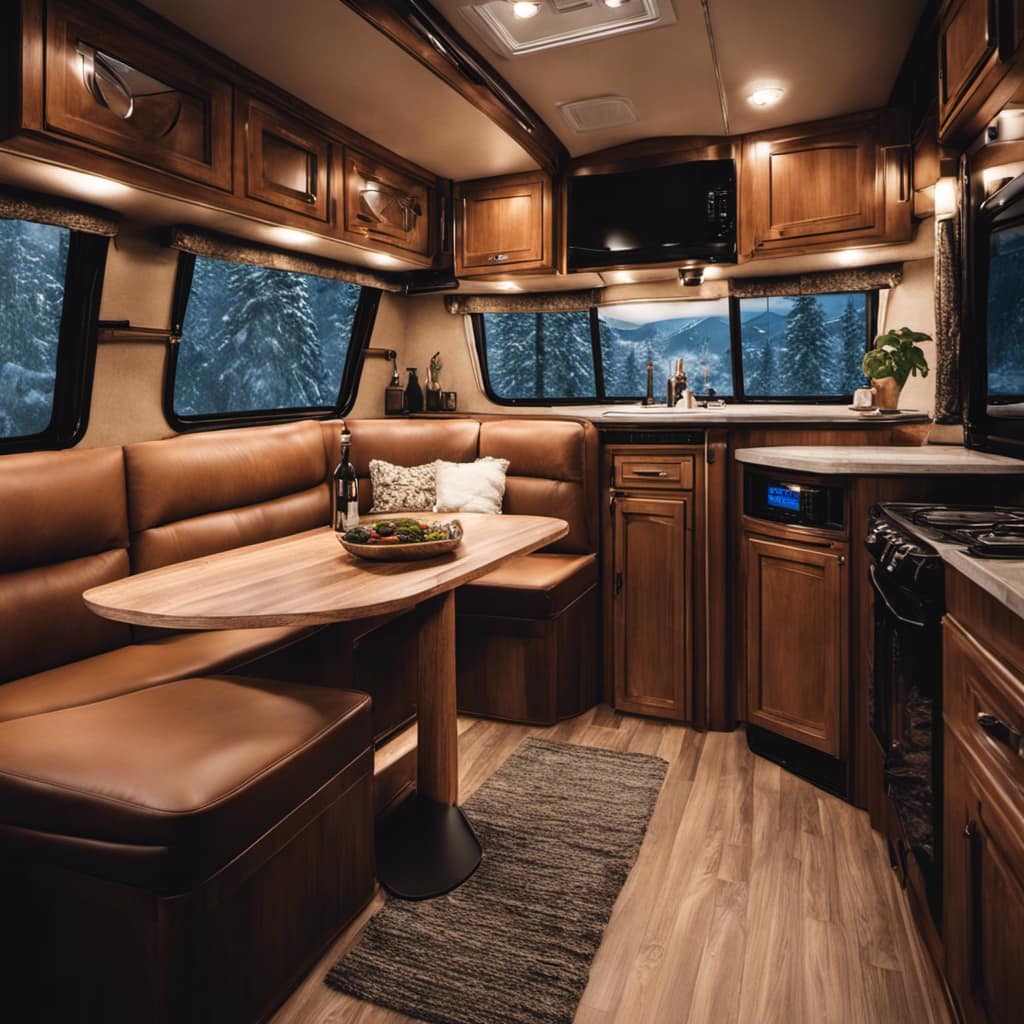
What Are Some Common Causes of Overheating in a Wood Stove Pipe?
Common causes of overheating in a wood stove pipe include excessive creosote buildup, restricted airflow, and improper wood burning techniques. Regular cleaning, proper ventilation, and using seasoned wood can help prevent overheating and ensure efficient operation.
Is It Necessary to Insulate the Wood Stove Pipe to Maintain the Right Temperature?
I find that insulating my wood stove pipe has many benefits. It helps regulate the temperature, preventing overheating and increasing efficiency. Plus, it reduces the risk of accidental burns.
Are There Any Safety Precautions I Should Take if the Wood Stove Pipe Temperature Gets Too High?
If the wood stove pipe temperature gets too high, there are several precautions I should take. First, I would avoid touching the pipe to prevent burns. Additionally, I could try to cool it down by opening windows or using a fan.
Conclusion
In conclusion, maintaining the optimal temperature range for a wood stove pipe is crucial for efficient and safe operation. Failure to monitor and control the temperature can lead to overheating or insufficient heat, compromising both the stove’s performance and safety.

For example, let’s consider a hypothetical case where a wood stove pipe is consistently operating at a low temperature. This can result in poor combustion, incomplete burning of wood, and a buildup of creosote, increasing the risk of chimney fires.
Therefore, it’s essential to regularly monitor and adjust the temperature to ensure proper functioning of the wood stove pipe.
Growing up surrounded by the vast beauty of nature, Sierra was always drawn to the call of the wild. While others sought the comfort of the familiar, she ventured out, embracing the unpredictable and finding stories in the heartbeat of nature.
At the epicenter of every remarkable venture lies a dynamic team—a fusion of diverse talents, visions, and passions. The essence of Best Small Wood Stoves is crafted and refined by such a trio: Sierra, Logan, and Terra. Their collective expertise has transformed the platform into a leading authority on small wood stoves, radiating warmth and knowledge in equal measure.






